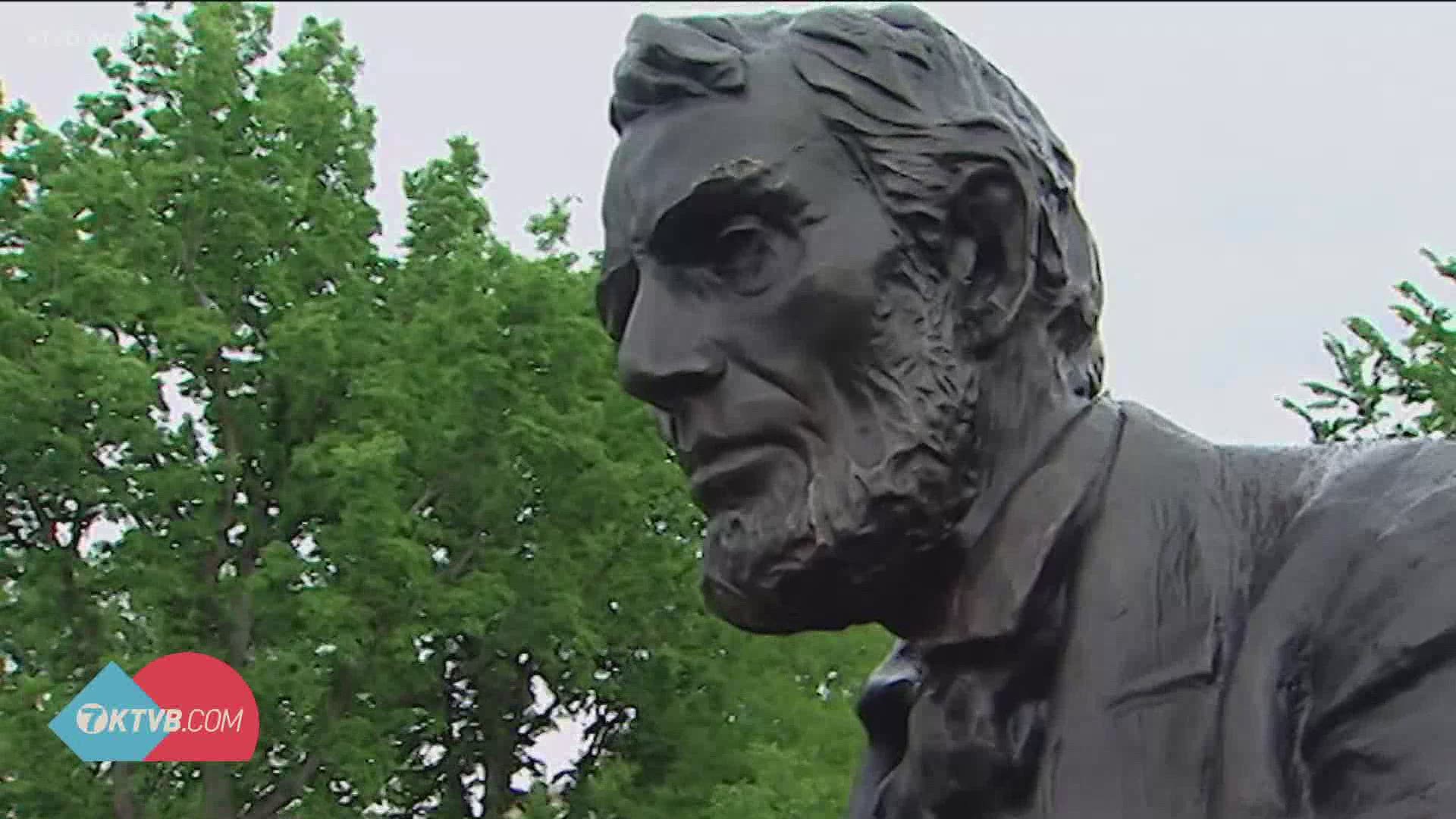BOISE, Idaho — The Abraham Lincoln statue at Julia Davis Park in Boise was defaced with red chalk paint and signs with political messaging. Former Idaho Attorney General and Abraham Lincoln historian Dave Leroy says the Lincoln statue that was defaced overnight stands for something he knows Idaho is proud of.
“Lincoln created Idaho territory in part to assure during the throws of the Civil War that all of the people in this territory remain forever free,” Leroy said. “This bronze historic statue takes no position on modern day political issues. Instead Lincoln in Idaho is ever emblematic that freedom and equality and liberty for all people shall always prevail in this state.”
Lincoln, like almost all historical figures, was not a perfect person. The statue was not put up to state that. As pointed out by a poster left at the statue, Lincoln did sign off on the execution of Native Americans.
Boise State professor Dr. Raymond Krohn provided the story and context on the event. He explains that,
“As chief executive, Lincoln effectively continued the policy approach of past presidents towards Native Americans. His administration, for example, took place during the forced relocation of the Navajo from New Mexico Territory; it additionally coincided with the Dakota War of 1862. The latter event, which occurred in Minnesota, resulted in Lincoln's upholding the execution of 38 Dakota (Sioux) warriors, as well as pardoning more than 300 others charged with war crimes.”
Leroy explains that Lincoln took it upon himself to investigate each case involved.
“Abraham Lincoln was so concerned about these allegations from the western regions of the country that there had been Native American uprisings and the killing of pioneers, that he absolutely insisted on personally reviewing all of these allegations that someone should be criminally punished or someone should be put to death, and in every single instance where he could resolve those facts in favor of releasing a Native American person or saving a Native American person’s life, he exercised that presidential intervention,” Leroy said.
History acknowledges the fact that Lincoln did not always make the perfect decision, but Leroy says it’s important to remember the context of everything Lincoln did.
Dr. Krohn writes for example,
“Like many prominent persons from the United States past, Abraham Lincoln's legacy is a mixed one, posing potential problems for present-day Americans. As an antislavery-oriented chief executive, but never an outright abolitionist, President Lincoln skillfully prepared white northerners for the necessity of slavery's eradication as a Civil War escalated each year. He also exhibited a wonderful ability to progress on racial matters, publicly supporting the enfranchisement of certain African Americans in the days before his assassination.”
Leroy, who helped bring the statue to Boise, says Lincoln stood for equality and justice.
“There is a concept called presentism, that is the idea that we judge figures or issues of the past by modern day standards. That is in itself inherently flawed because we can never use history that way. In fact, history is the greatest teacher and Lincoln was its greatest professor when it comes to equality, justice, and liberty in the United States of America and in Idaho territory, Idaho State,” Leroy said.
Join 'The 208' conversation:
- Text us at (208) 321-5614
- E-mail us at the208@ktvb.com
- Join our The 208 Facebook group: https://www.facebook.com/groups/the208KTVB/
- Follow us on Twitter: @the208KTVB or tweet #the208 and #SoIdaho
- Follow us on Instagram: @the208KTVB
- Bookmark our landing page: /the-208
- And we also turn each episode into a podcast or Podbeam
- Still reading this list? We're on YouTube, too:

